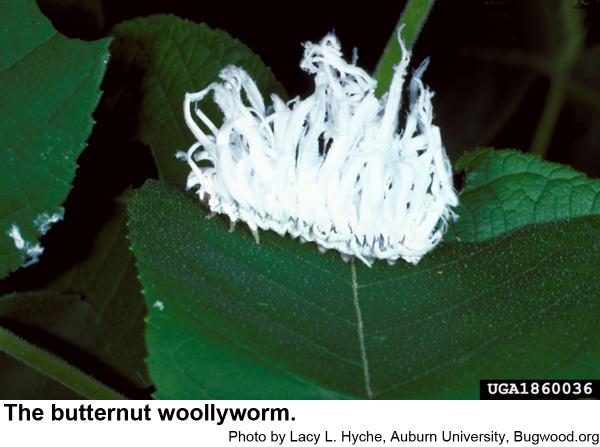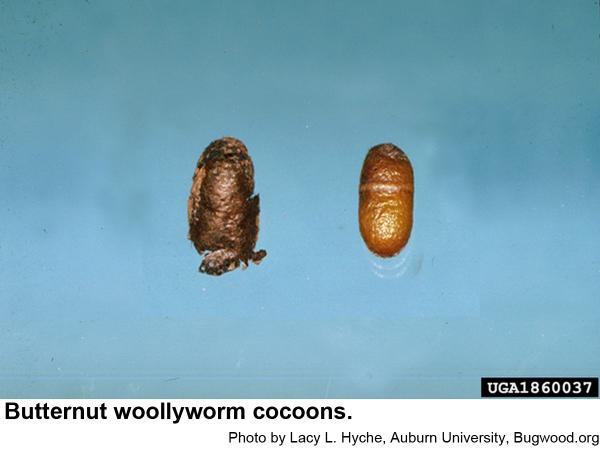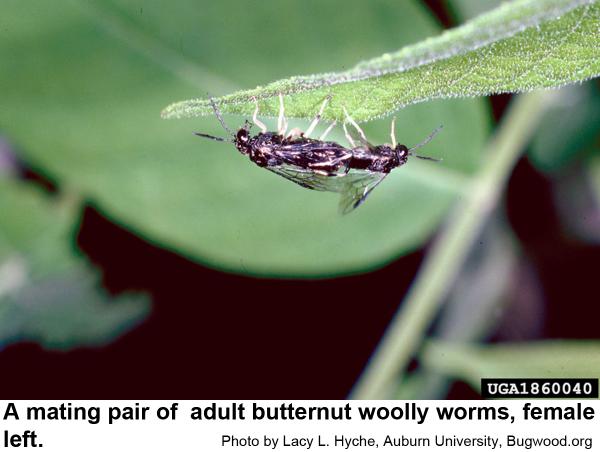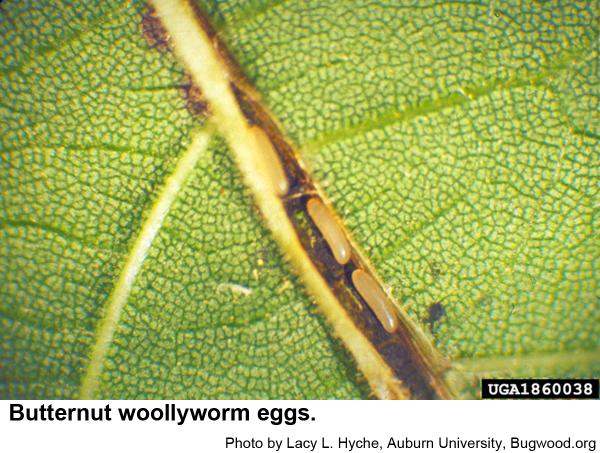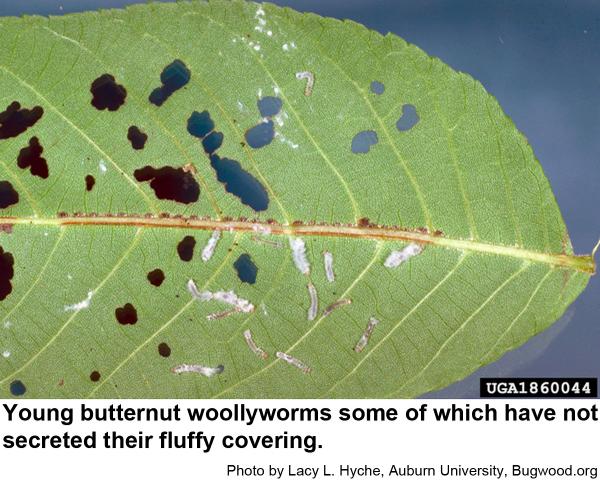Description and Biology
The butternut woollyworm, Eriocampa juglandis, is actually a sawfly caterpillar (sawfly caterpillars have ten pairs of legs — a pair of legs on every segment — whereas moth and butterfly caterpillars have eight or fewer pairs of legs). Fully grown butternut woollyworm caterpillars are green with blackish spots and a black head. However, the caterpillars are covered with a thick, fluffy secretion that makes them look like nothing ever seen before! They feed in groups, which also contributes to their visual impact. When mature in mid July, the caterpillars crawl to the soil and spin a cocoon that incorporates soil particles. The rest of the summer, winter, and spring is spent as a prepupae inside the cocoon. In April, prepupae molt into pupae that soon develop into dark flylike insects about 7/16 inch long (males are smaller) that emerge from the cocoon to mate. These sawflies have black bodies with white legs. The wings are held flat over the back when at rest. Females lay their very small, creamy-white eggs inside living leaves using their sawlike ovipositors (hence the name sawfly) to cut small slits into the midribs on the upper surface of leaflets in which to deposit her eggs. Eggs hatch in about a week in mid May and tiny butternut woollyworms begin to feed on the underside of the leaves. At first, the small caterpillars chew small holes between veins, but as they grow to 7/8 inch long, they consume entire leaflets leaving behind only the larger veins and midrib. The butternut woollyworm has only one generation of caterpillars each year.
Host Plants
Although not abundant, butternut woollyworms feed on black walnut, butternut and hickory anywhere these trees grow. Infested trees usually survive these short-term outbreaks without real harm, but the the trees may look bad until new, undamage leaves emerge. The butternut woollyworm is primarily important as a pest of shade trees.
Residential Recommendations
Most sawflies are very sensitive to pesticides. Sevin, Orthene or one of the other insecticides labeled for landscape use should give more than adequate control.
Other Resources
- Butternut woollyworm: A unique summer pest of walnuts. Bricault, B. 2014. Michigan State University, MSU Extension.
- Seasonal Cycle and Habits of the Butternut Woollyworm. Hyche, L. L. 1989. July 1989 Alabama Agricultural Experiment Station, Auburn University. Bulletin 601.
- Extension Plant Pathology Publications and Factsheets
- Horticultural Science Publications
- North Carolina Agricultural Chemicals Manual
For assistance with a specific problem, contact your local N.C. Cooperative Extension Center.
This Factsheet has not been peer reviewed.
Publication date: May 20, 2019
Reviewed/Revised: March 23, 2024
Recommendations for the use of agricultural chemicals are included in this publication as a convenience to the reader. The use of brand names and any mention or listing of commercial products or services in this publication does not imply endorsement by NC State University or N.C. A&T State University nor discrimination against similar products or services not mentioned. Individuals who use agricultural chemicals are responsible for ensuring that the intended use complies with current regulations and conforms to the product label. Be sure to obtain current information about usage regulations and examine a current product label before applying any chemical. For assistance, contact your local N.C. Cooperative Extension county center.
N.C. Cooperative Extension prohibits discrimination and harassment regardless of age, color, disability, family and marital status, gender identity, national origin, political beliefs, race, religion, sex (including pregnancy), sexual orientation and veteran status.


